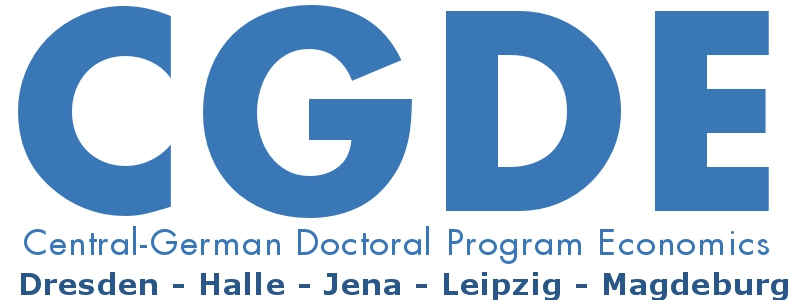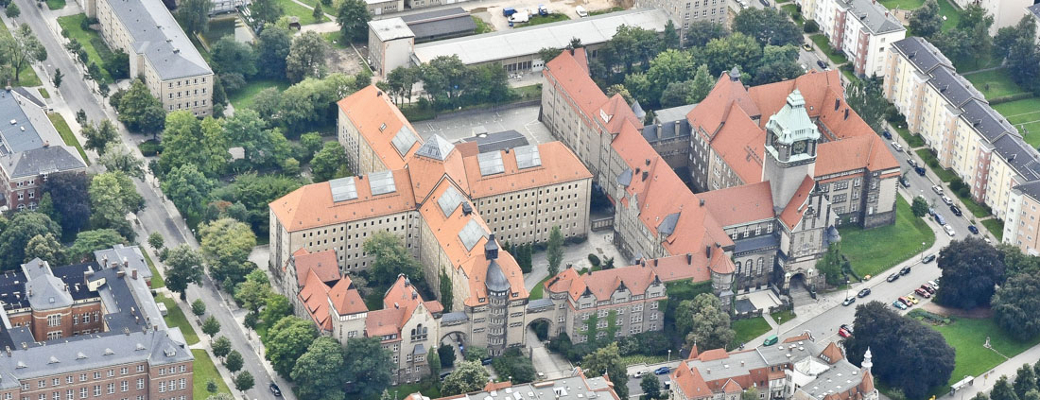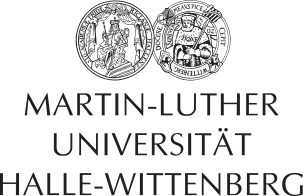Frontiers in Econometrics
International Finance: Empirical Methods
Lecturer: Prof. Guglielmo Maria Caporale (Brunel University, London)
Date: February 6, 2012: 9:30-12:30 (am), 2:00-4:00 (pm)
February 7, 2012: 9:30-12:30 (am), 2:00-4:00 (pm)
February 8, 2012: 9:30-12:30 (am), 2:00-4:00 (pm)
The morning sessions will be used for teaching, followed by discussions of further issues in the afternoon sessions.
Venue: TU Dresden, Faculty of Business and Economics, Georg-Schumann-Bau, Room B 37, Muenchner Platz 1-3, 01187 Dresden
Registration: until January 31, 2012 via email: sekretariat.gkw@mailbox.tu-dresden.de
Aims
To highlight some key empirical issues arising in the analysis of international financial markets, and outline appropriate empirical strategies to analyse them.
Learning Outcomes
Students successfully completing the module will acquire a deep understanding of how to use a variety of state-of-the-art econometric methods for the empirical analysis of international financial markets. They will become familiar with advanced empirical methods and how to apply them to investigate some key questions in International Finance.
Contents
1. International Capital Mobility
2. International Parity Conditions
2.1. Uncovered Interest Parity
2.2. Purchasing Power Parity
3. Financial Contagion
4. Volatility Spillovers
5. Monetary Policy in the European Monetary Union
6. Fiscal policy and exchange rates
Pre-requisites
Sound knowledge of quantitative methods (non-stationary time series in particular) is helpful
Key readings
Useful textbooks for background material on international financial markets are:
[1] Krugman, P. and M. Obstfeld (2008), International Economics: Theory and Policy, Addison-Wesley.
[2] Sarno, L. and M.P. Taylor (2003), The Economics of Exchange Rates, Cambridge University Press.
and for econometric techniques:
[1] W. Enders, Applied Econometric Time Series, 2nd ed., John Wiley & Sons.
Some of the following papers will be discussed:
[1] Caporale, G.M., Panopoulou, E. and N. Pittis (2005), “The Feldstein-Horioka puzzle revisited: a Monte Carlo study”, Journal of International Money and Finance, 24, 7, 1143-1149.
[2] Barassi, M.R., Caporale, G.M. and S.G. Hall (2005), “Interest rate linkages: a Kalman filter approach to detecting structural change”, Economic Modelling, 22, 2, 253-284.
[3] Barassi, M.R., Caporale, G.M. and S.G. Hall (2005), “A sequential test for structural breaks in the causal linkages between the G-7 short-term interest rates”, Open Economies Review, 16, 2, 107-133.
[4] Barassi, M.R., Caporale, G.M. and S.G. Hall (2008), “A comparison between tests for changes in the adjustment coefficients in cointegrated systems”, Journal of Statistical Computation and Simulation, 78, 1, 1-17.
[5] Caporale, G.M., Cipollini, A. and N. Spagnolo (2005), “Testing for contagion: a conditional correlation analysis”, Journal of Empirical Finance, 12, 3, 476-489.
[6] Caporale, G.M., Pittis, N. and N. Spagnolo (2002), “Testing for causality-in-variance: an application to the East Asian markets”, International Journal of Finance and Economics, 7, 3, 235-245.
[7] Caporale, G.M. and N. Spagnolo (2003), “Asset prices and output growth volatility: the effects of financial crises”, Economics Letters, 79, 1, 69-74.
[8] Arestis, P., Caporale, G.M., Cipollini, A. and N. Spagnolo (2005), “Testing for financial contagion between developed and emerging markets during the 1997 East Asian crisis”, International Journal of Finance and Economics, 10, 4, 359-367.
[9] Caporale, G.M., Pittis, N. and N. Spagnolo (2006), “Volatility transmission and financial crises”, Journal of Economics and Finance, Fall issue, 30, 3, 376-390.
[10] Caporale, G.M., Beirne, J., Schulze-Ghattas, M. and N. Spagnolo (2009), “Volatility spillovers and contagion from mature to emerging stock markets”, ECB WP no. 1113.
[11] Beirne, J., Caporale, G.M., Schulze-Ghattas, M. and N. Spagnolo (2010), “Global and regional spillovers in emerging stock markets: a multivariate GARCH-in-mean analysis”, Emerging Markets Review, 11, 250-260.
[12] Caporale, G.M., Cipollini, A. and P.O. Demetriades (2005), “Monetary policy and the exchange rate during the Asian crisis: identification through heteroscedasticity”, Journal of International Money and Finance, 24, 1, 39-53.
[13] Caporale, G.M., N. Pittis and P. Sakellis (2003), “Testing for PPP: the erratic behaviour of unit root tests”, Economics Letters, 80, 2, 277-284.
[14] Caporale, G.M. and C. Hanck (2009), “Cointegration tests of PPP: do they also exhibit erratic behaviour?”, Applied Economics Letters, 16, 1, 9-15.
[15] Caporale, G.M. and C. Hanck (2010), “Are PPP tests erratically behaved? Some panel evidence”, International Review of Applied Economics, 24, 2, 203-221.
[16] Caporale, G.M. and A. Gregoriou (2009), “Non-normality, heteroscedasticity and recursive unit root tests of PPP: solving the PPP puzzle?”, Applied Economics Letters, 16, 3, 223-226.
[17] Caporale, G.M. and M. Cerrato (2006), “Panel data tests of PPP: a critical overview”, Applied Financial Economics, 16, 1-2, 73-91.
[18] Caporale, G.M. and A. Kontonikas (2009), “The Euro and inflation uncertainty in the European Monetary Union”, Journal of International Money and Finance, 28, 6, 954-971.
[19] Caporale, G.M., Paesani, P. and L. Onorante (2011), “Inflation and inflation uncertainty in the euro area”, forthcoming, Empirical Economics.
[20] Caporale, G.M., Ciferri, D. and A. Girardi (2011), “Fiscal shocks and real exchange rate dynamics: some evidence for Latin America”, forthcoming, Journal of International Money and Finance.























